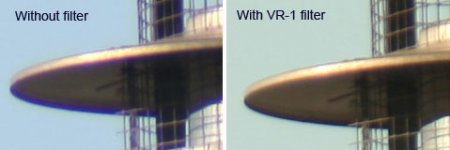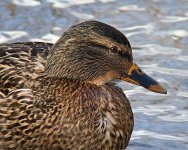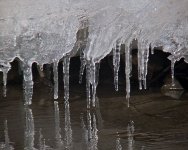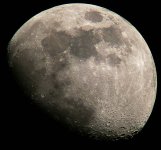Paul Corfield
Well-known member
The VR-1 filter is worth getting and does work very well from test photos I've seen. I've attached a photo below from the Cloudy Nights astronomy website. There's a couple more photos on the link below also along with a price for the 2" version. They used to make a 1.25" version but I'm not sure if they still do. On my scope I'd just remove the 2" eyepiece holder and screw it into that. It's most likely going to be my next purchase as like all achromat telescope I suffer with some fringing in bright light. I remove it in Photoshop but it's a pain when you have to do it wth every photo.
I tried the Baader Semi Apo filter a few weeks ago. It's also a minus violet filter and a contrast booster all rolled into one. The coating was quite dark though and the shutter speeds went down considerably. Apart from that it did a good job of removing the aberration. The William Optics filter is much better, light transmission is over 80% and blue/violet fringe removal is around 90% according to what I've read. There's a slight color shift but that can be removed by setting the manual white balance on the camera.
http://www.opticsplanet.net/william-optics-2-vr1-violet-reducer-filter-wa-vr1-2.html
Paul.
I tried the Baader Semi Apo filter a few weeks ago. It's also a minus violet filter and a contrast booster all rolled into one. The coating was quite dark though and the shutter speeds went down considerably. Apart from that it did a good job of removing the aberration. The William Optics filter is much better, light transmission is over 80% and blue/violet fringe removal is around 90% according to what I've read. There's a slight color shift but that can be removed by setting the manual white balance on the camera.
http://www.opticsplanet.net/william-optics-2-vr1-violet-reducer-filter-wa-vr1-2.html
Paul.







